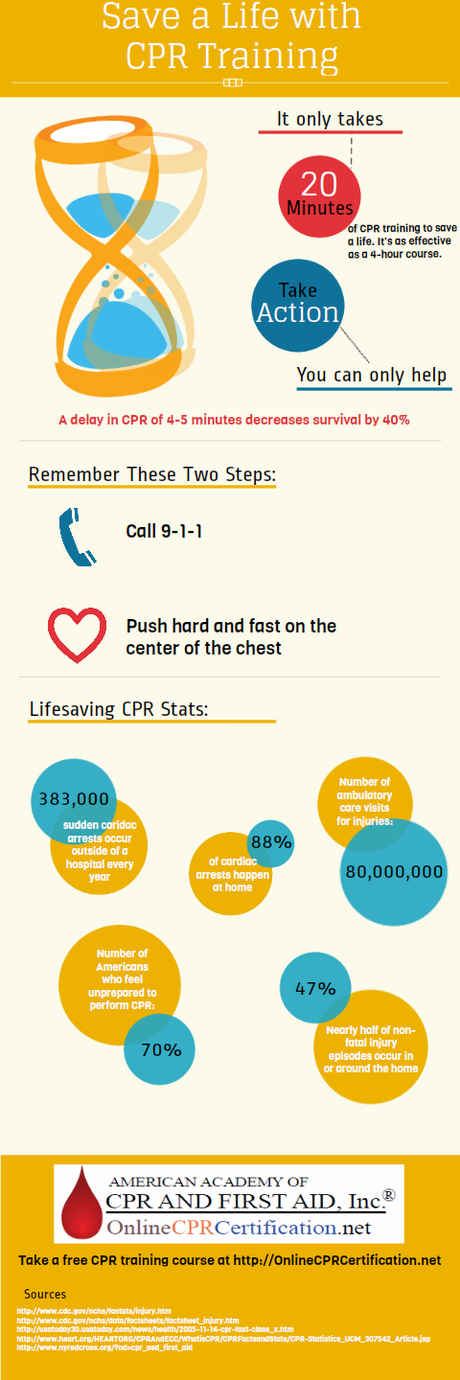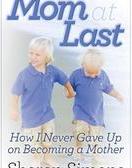From buckling seatbelts to putting on bike helmets, moms do a lot to ensure their kids’ safety. When it comes to basic lifesaving and first aid skills, however, many of us could do with a refresher. Cardiopulmonary resuscitation, or CPR, is one such skill—knowing it can literally save your child’s life, but many parents are likely not as comfortable with it as they should be.
How important is learning it? The survival rate for children experiencing respiratory arrest is more than 70 percent if CPR is administered immediately. For every minute without CPR, the chances of a full recovery are diminished. A delay of 4-5 minutes decreases survival by 40 percent.
With that in mind, it’s recommended that anyone who has or works with children to learn and get certified.
Here’s a basic breakdown of the guidelines for infant and child CPR:

Infant and Child CPR Basics
For the purposes of CPR, “infants” are one year old and younger. The age range for “children” is one year to puberty—or about 13 years old.
1. Check for responsiveness and breathing. Do this for no more than 10 seconds. Occasional gasps do not count as breathing.
2. Call 9-1-1. Or send someone to do it for you.
3. Start chest compressions. Press hard and fast—about 100 beats per minute. Use the beat of the Bee Gees hit, “Stayin’ Alive” to get a feel for how fast you should be pressing.
• For infants, place two fingers in the center of the chest, slightly below an imaginary line connecting the nipples. Compress 1 ½ inches, or about a third the depth of the chest.
• For children, place hands in the center of the chest and. Compress 2 inches, or about a third of the depth of the chest.
4. Give 2 rescue breaths. Tilt the head back, and lift the chin. Blow for about 1 second. Make sure that the chest rises. If it does not, reposition the child and check for anything that may be blocking the airway.
• For infants, make a complete seal over the nose and mouth.
• For children, pinch the nose and make a complete seal over the mouth.
The compression-to-breath ration for children and infants is 30:2 if you are by yourself. If you have another person with you, the ratio is 15:2. Try to give 12-20 breaths per minute. If there are two people, switch off during compressions, so as to minimize “no flow” time. A good way to do this is to do four “rounds” of CPR (compressions and breaths). During the fifth compression period, switch off around the 20th compression. The second person should finish out the compression cycle and be prepared to administer two breaths.
Keep performing CPR until one of these things happen:
• You find a sign of life, such as breathing.
• Paramedics arrive and take over.
• An automated external defibrillator (AED) is ready to use (follow the instructions).
Remember: You may be nervous or unsure about performing CPR. The most important thing is to act—doing something is better than doing nothing.
What You Can Do
Getting CPR training is important. You can’t just count on a quick response from emergency medical services—you should make it a priority to get familiar with this technique. The good news is that CPR training doesn’t even have to take that long. Studies have shown that as little as twenty minutes of study can be effective in learning CPR. Online CPR training can also be useful as preparation for an in-person class or for refreshing skills and information that you may have learned but forgotten. Even ultra-busy moms should be able to find a free half hour to sit down and review this essential skill.
How about you? Are you CPR-prepared? What other things can you do to make sure that you’re ready for emergency situations?Leave us a Comment!
About the Author
John Perkins works as a marketing manager with OnlineCPRCertification.net and enjoys writing about topics related to health and wellness. In his free time, he enjoys wake boarding, going to concerts, and cooking with fresh ingredients.


